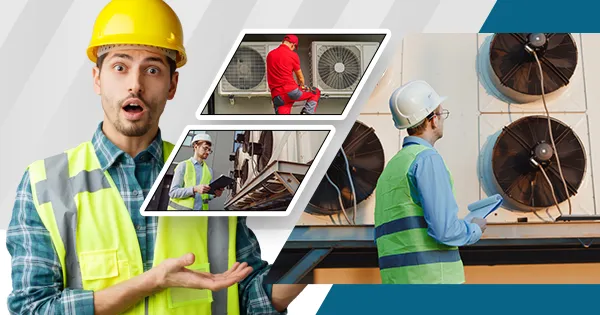Facilities management plays a crucial role in the success of educational institutions. It encompasses a wide range of activities. These include maintenance and repair, energy management, security, cleaning and sanitation, space management, technology integration, compliance and regulation, budgeting and planning, and staff training and development. Efficient facilities management serves several critical purposes. This includes ensuring the safety, functionality, and cleanliness of school facilities. It also involves reducing costs and environmental impact, maximising space utilisation, leveraging technology for better management, complying with legal requirements, allocating resources effectively, and empowering facilities management teams for success.
Educational institutions are responsible for providing a safe and conducive learning environment for students. Regular maintenance and repair are essential to ensure the safety and functionality of school facilities. This includes inspecting and repairing electrical systems, plumbing systems, HVAC systems, roofs, windows, doors, and other structural components. By conducting regular maintenance and addressing repairs promptly, educational institutions can prevent accidents and injuries caused by faulty equipment or infrastructure. Additionally, well-maintained facilities contribute to a positive learning experience for students by providing a comfortable and functional environment.
Maintenance and Repair: Ensuring the Safety and Functionality of School Facilities
Regular maintenance and repair are crucial for the safety and functionality of school facilities. Educational institutions should have a comprehensive maintenance plan in place to address routine maintenance tasks as well as unexpected repairs. Preventative maintenance is an effective strategy to identify potential issues before they become major problems. This includes conducting regular inspections of equipment and infrastructure to identify any signs of wear or damage.
Prioritising repairs is another important aspect of efficient facilities management. Educational institutions should establish a system for prioritising repairs based on urgency and impact on safety or functionality. This ensures that limited resources are allocated to address the most critical issues first. By prioritising repairs effectively, educational institutions can minimise disruptions to daily operations. And that maintains a safe and functional learning environment for students and staff.
Energy Management: Strategies for Reducing Costs and Environmental Impact
Energy management is an important aspect of efficient facilities management in educational institutions. By implementing energy-saving strategies, educational institutions can reduce costs and minimise their environmental impact. One strategy is to conduct energy audits to identify areas of energy waste and opportunities for improvement. These audits can help educational institutions identify energy-efficient equipment, lighting systems, and HVAC systems that can be installed to reduce energy consumption.
Behaviour change programmes can also be implemented to encourage students and staff to adopt energy-saving habits. This can include educating them about the importance of energy conservation and providing tips on how to reduce energy consumption in their daily activities. By involving the entire school community in energy-saving efforts, educational institutions can achieve significant reductions in energy usage.
Security: Protecting Students, Staff, and Assets
Security is a top priority in educational institutions. It is essential to protect students, staff, and assets from potential threats. Access control systems can be implemented to restrict access to school facilities and ensure that only authorised individuals are allowed entry. Additionally, emergency preparedness plans should be developed and regularly reviewed to ensure that educational institutions are prepared to respond effectively to emergencies such as natural disasters or security incidents.
Cleaning and Sanitation: Maintaining a Healthy Learning Environment
Maintaining a clean and sanitary learning environment is crucial for the health and well-being of students and staff. Regular cleaning and sanitation practices should be implemented to prevent the spread of germs and maintain a hygienic environment. This includes developing cleaning schedules that outline the frequency and scope of cleaning tasks. Proper cleaning techniques should also be followed to ensure that surfaces are effectively cleaned and sanitised.
Educational institutions should also consider using environmentally friendly cleaning products to minimise the use of harmful chemicals. This not only promotes a healthier environment but also reduces the impact on the environment.
Space Management: Maximising the Use of School Facilities
Effective space management is essential for maximising the use of school facilities. Educational institutions often have limited space and need to make the most of what they have. Space utilisation analysis can be conducted to identify areas of underutilisation or inefficiency. This analysis can help educational institutions identify opportunities to repurpose or reconfigure spaces to better meet their needs.
Flexible scheduling can also be implemented to optimise the use of shared spaces. By allowing different groups or activities to use the same space at different times, educational institutions can maximise the utilisation of their facilities. Additionally, shared spaces can be created to accommodate multiple functions or activities. For example, a gymnasium can be designed to also serve as an auditorium or meeting space when not being used for physical education classes.
Technology Integration: Leveraging Technology for Better Facilities Management
Technology integration is becoming increasingly important in facilities management. Educational institutions can leverage technology to streamline processes, improve efficiency, and enhance the overall management of their facilities. Facility management software serves the purpose of centralising data. Additionally, it automates tasks like work order management, asset tracking, and inventory management.
The Internet of Things (IoT) devices can also be utilised to collect data and provide real-time insights into the performance of school facilities. For example, sensors can be installed to monitor temperature, humidity, air quality, and occupancy levels.
Compliance and Regulations: Staying Up to Date with Legal Requirements
Compliance with regulations and legal requirements is essential for facilities management in educational institutions. There are various regulations and codes that govern the design, construction, operation, and maintenance of school facilities. It is important for educational institutions to stay up to date with these requirements to ensure that their facilities are safe, accessible, and compliant.
Regular training and education should be provided to facilities management teams to ensure that they are aware of the latest regulations and best practices. Educational institutions can also partner with legal experts or consultants who specialise in facility management to provide guidance and support in navigating complex legal requirements.
Budgeting and Planning: Strategies for Effective Resource Allocation
Budgeting and planning are critical for effective resource allocation in facilities management. Educational institutions often have limited resources and need to prioritise their needs. By developing a comprehensive budgeting and planning process, educational institutions can allocate resources effectively and ensure that their facilities are well-maintained and meet the needs of students and staff. Prioritising needs is an important aspect of budgeting and planning. Educational institutions should identify their most critical needs and allocate resources accordingly. This may involve conducting a thorough assessment of the condition of school facilities, identifying areas of improvement, and developing a prioritised list of projects or initiatives.
Forecasting future needs is also important in budgeting and planning. Educational institutions should consider the long-term needs of their facilities and develop a plan for addressing these needs over time. This may involve setting aside funds for future repairs or replacements, seeking alternative funding sources such as grants or donations, or exploring partnerships with other organisations.
Staff Training and Development: Empowering Facilities Management Teams for Success
Staff training and development are essential for empowering facilities management teams for success. Educational institutions should invest in the professional development of their facilities management staff to ensure that they have the knowledge and skills necessary to perform their roles effectively. Regular training and education should be provided to keep facilities management staff up to date with the latest industry trends, best practices, and technologies. This can include attending conferences, workshops, or webinars, as well as participating in professional certification programmes.
Cross-training can also be implemented to ensure that facilities management staff have a broad range of skills and can perform multiple tasks. This not only enhances the flexibility and efficiency of the team but also provides opportunities for career growth and advancement. Leadership development programmes should also be considered to groom future leaders in facilities management. By providing opportunities for staff to develop their leadership skills, educational institutions can ensure a smooth transition of leadership and continuity in facilities management.







